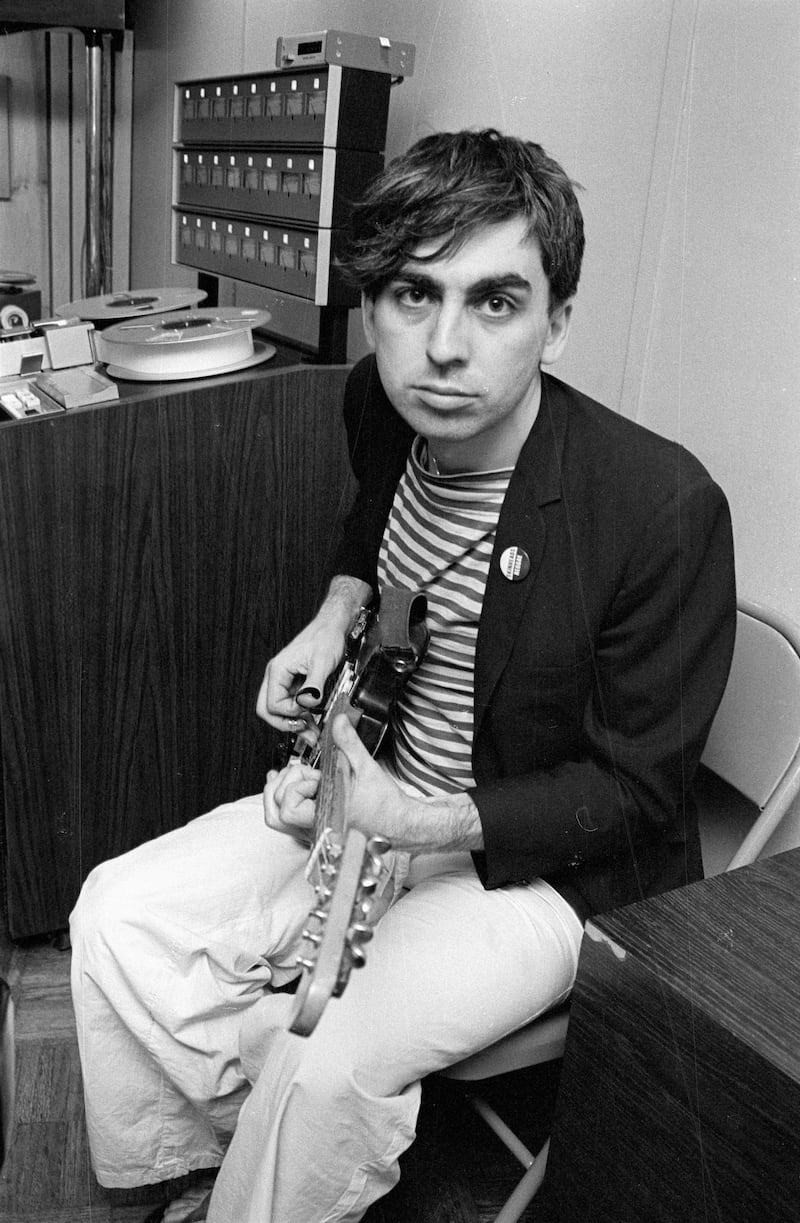A shock of white hair framing his face, Chris Stein peers over his sunglasses and answers every question in our 30-minute chat in a laconic NYC drawl. He sounds as if he’d rather be somewhere else, but in fact it’s more that he has always lived life in a different gear. The usually reclusive guitarist is promoting his memoir, Under a Rock, a searingly honest account of his childhood and subsequent emergence in the New York pre-punk music scene of the mid-1970s, when he formed Blondie with Debbie Harry. The band remains fully functional, and Harry a long-time friend (and former partner) to whom Stein dedicates the book, but unlike some of his contemporaries he looks all of his 74 years of age.
He hasn’t toured with Blondie for some years, having been fatigued by an irregular heartbeat. “For the last bunch of touring I was sitting down. I figured if BB King could do it, then so could I! Future touring? I don’t know ... I really like being on stage for those few moments, but the whole thing surrounding it – the hotels, airports, getting to the venues for soundchecks, all that stuff – is such a grind. It’s draining even for healthy people.”
The years 1972-1975 remain pivotal to Stein’s life and career. He writes of seeing bands such as Silver Apples, Suicide and The Stooges, but everything changed when New York Dolls came along. “They were definitely ahead of the movement and solidified a lot of style elements for a lot of people. I look back from the age I am now and I’m not sure I understood it at the time, but the appeal was part androgyny, gender-fluidity and very aggressive music.
“The Dolls had both traditionally masculine and feminine mash-ups going on all the time. They had some very soft songs and some very antagonistic songs, and because of these they generated a lot of enthusiasm, to say the least. Unfortunately, in a commercial sense they never really succeeded, but they certainly influenced many people. America just wasn’t ready for them.”
READ MORE
Even in 1978, when Blondie had released three albums, the United States wasn’t ready for a band with a woman lead singer, either, he says. “Blondie was a success in the UK and Europe before the likes of The Tide Is High and Rapture were released, and that’s when America really took to us. From the mid-1980s, with MTV arriving, music became very grounded in visual media, but in the late 1970s and early 1980s Blondie was just scratching the surface with our videos. If visual media had been more culturally established, then maybe we would have succeeded in the US before anywhere else.”
Stein also puts Blondie’s initial lack of commercial success on their home turf, despite releasing some of the most melodic pop-punk songs of the era, down to a boys’-club mentality. “In 1975 The Rolling Stones came out on stage with a giant inflatable penis for some of their shows, and there was never any outcry about that. I always wondered about the reverse of that – like, what if Debbie had done the woman equivalent? Even now Madonna gets so much flak for doing some of the things she does on stage. Back then, and even now, it’s a misogynistic culture that we have to deal with.”
Stein says he and the band had a terrible sense of music-industry mechanics, especially when it came to money. “When we were starting, there was little advice available, believe me, and not even a small level of knowledge. Going into the world of contracts and signatures was very mysterious, and to my shame I was happy to frequently turn those aspects over to people I probably shouldn’t have trusted. We just fell in with a bad crowd, as it were, as did so many other people.”

Stein doesn’t flinch in describing his (and Harry’s) drug issues during the 1980s. “We had crossed some line and went over to the dark side,” he writes. Strung out and penniless, and desperate to score heroin, he sold art by his friend Jean-Michel Basquiat. Stein and Harry had paid $200 for Cadillac Moon, Basquiat’s first painting. They sold it for $10,000, while Basquiat was still alive. (Who died, in 1988, of a heroin overdose.)
The price “seemed like a good deal to me”, Stein says, reasonably enough. Nobody realised that such success would come Basquiat’s way, he adds. “Maybe Andy Warhol did, but I don’t think the people, or his peers, necessarily got it at the time. I certainly didn’t see it coming. I thought he was great and talented, but I didn’t think he was going to turn into, you know, f**king Michelangelo! We know nothing, right? I mean, you could have bought Bitcoin in 2011 for $10, so there you go.”
[ Two Basquiats expected to fetch €41m and €27mOpens in new window ]
Stein won’t talk about his diagnosis, in the mid-1980s, with the rare autoimmune disease pemphigus vulgaris, which causes the skin to blister; his break-up with Harry; and the death, last year, of his 19-year-old daughter, Akira, of an accidental drug overdose. In Under a Rock he writes, “I thought that I presented my own drug experiences in a negative light to our kids, but I’m racked with guilt that any discussions might have been misconstrued.”
[ Debbie Harry: ‘Sex is what makes everything happen’Opens in new window ]
Life is full of what-ifs, Stein says – he likes the way the Russian author PD Ouspensky portrays it in his novel Strange Life of Ivan Osokin. “Ivan goes to a magician and says if you send me back in time, I will fix everything in my life. The magician sends him back, and Ivan does everything the same way. So that’s it, my friend: we are all subject to time being a flat circle, whatever that is – you know, just repeating ourselves.”
Under a Rock is the best kind of music memoir: honest, unselfish, bursting with a life of experiences (albeit not always good or pleasant ones). In it, Harry describes him as “a wild card from the unexpected deck”. It’s a lovely thing to say, isn’t it?
“Well, yeah,” Stein says. “I was always kind of into chaos. I’m like the boy who stood on the burning deck: there was nothing I shied away from.”
Under a Rock, by Chris Stein, is published by Little, Brown






















